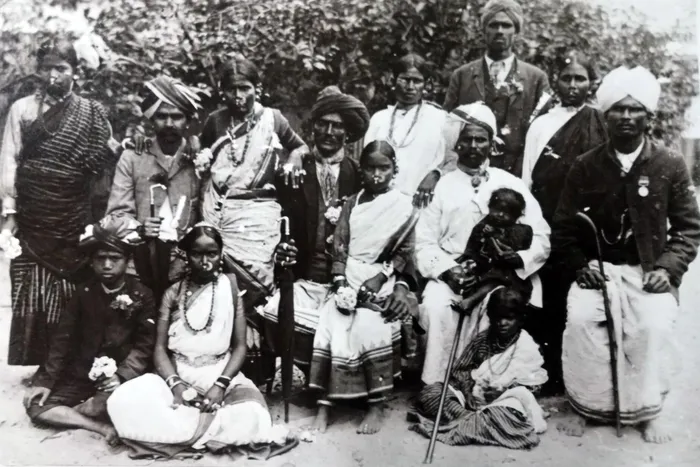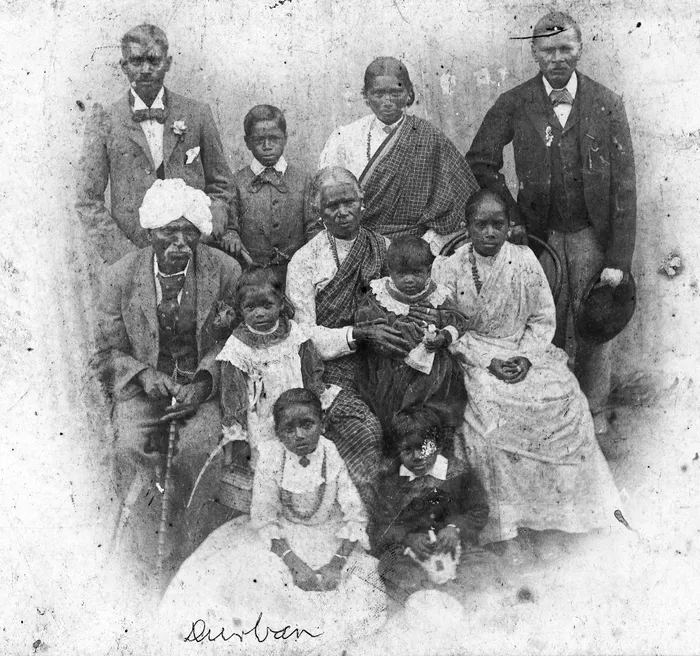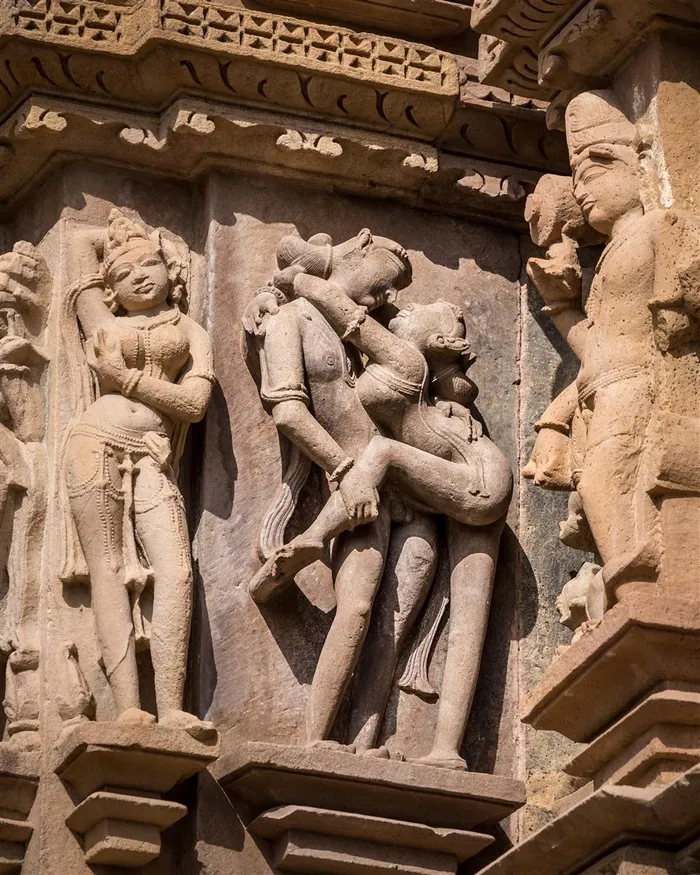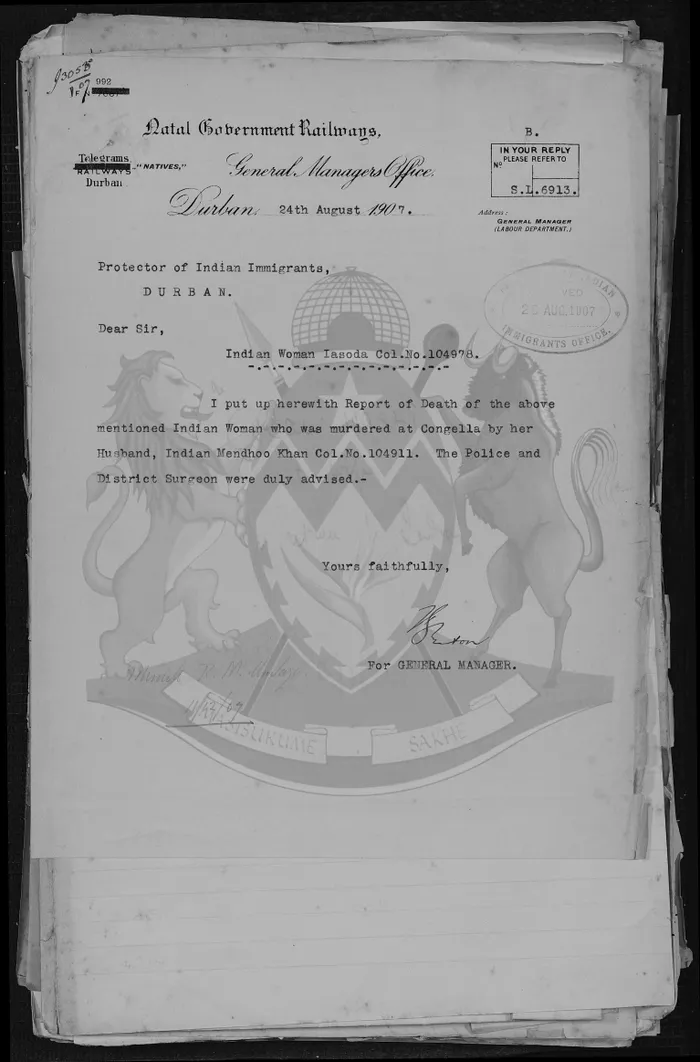The lingering trauma of indenture: femicide, homosexuality and bestiality
Navigating identities

Indentured Family on the plantation, 1903. The picture speaks of the ideal family life that indentured workers aspired to have.
Image: 1860 Heritage Centre
SEX within the Indian community is frequently a controversial subject. The enduring impact of colonialism, indenture, and apartheid continues to influence the many lives of South African descendants of indentured workers. Despite significant strides, challenges related to socioeconomic disparities and social mobility persist for many parts of this community.
Thirty-one years into South Africa’s democracy, the community of Indian ancestry continues to navigate multiple identities that pose unique challenges, often leading to complex feelings of belonging. The historical trauma of the indentured experience lingers in various ways that affect psychological and physical well-being beyond the 165 years since the first indentured workers arrived to their African homes on November 16, 1860.
Hugh Tinker, author of the seminal study, "New System of Slavery…" argues that slavery left a legacy that the colonial and imperialist powers had no real interest in overcoming.
“A convincing case can be made that indenture reproduced the actual conditions of slavery. Physical labour was favoured over mechanisation. Indenture was characterised by intense violence, including summary physical, psychological, and economic punishments. Women were especially vulnerable to sexual violence and exploitation. Freedom of movement was heavily constrained, even when passes could be obtained. The disproportionate number of women created unstable relationships, social ills, and immense difficulty in creating family life.”

South Indian Family, 1903.
Image: 1860 Heritage Centre
Recruiters frequently struggled to meet the quota, and many women who were recruited did so to escape difficult situations in India, such as widowhood or poverty. The resulting extreme sexual imbalance was a source of great social strain in the new settlements.
These social strains are horrifically evidenced by the brutal murder of 29-year-old Josoda Dayal, indentured number 104978, in 1907, mined from the colonial archive through our research.
Dayal arrived as an 18-year-old from Jaunpur on board the Umzinto XXXIII in 1904, indentured to work for the director of agriculture in Hilton Road, Pietermaritzburg. Three years from when she arrived, Dayal was found murdered at the Congella Railway Barracks on August 19, 1907. The circumstances of her death occurred from “severe fracture of the head", said to have been done with an axe. The cause of her death was assigned as “fracture of the skull and laceration of the brain”.
The Natal Government Railways report to the Protector of Indian Immigrants on August 24, 1907, identified the husband of Dayal, 25-year-old Mendhoo Khan, indenture number 104911, as responsible for her murder.

Relief sculpture at the Khajuraho - Jagadambi Temple.
Image: Kevin Standage.
Khan arrived on the same ship as Dayal and was also indentured to the director of agriculture in Pietermaritzburg. The archive is unclear as to when and where Dayal and Khan were married. Cases like that of Dayal and the topic of femicide in Indian indenture are well-documented by the scholarly work of Jo Beall, Prinisha Badassay, Nafisa Essop Sheik, Kalpana Hiralal, and many others.
Outside of femicide, less known and often hidden within the archive, matters of homosexuality and bestiality in Indian indenture are topics that are rarely written about. In extreme cases, desperation turned into untold depravity, with the gender imbalance seeing men turn to bestiality to pacify their sexual needs. In April 1907, the Native High Court archive files list indentured worker Veerasamy as a prisoner having committed the crime of bestiality.
Inside Indian Indenture by professors Goolam Vahed and Ashwin Desai argues that: “In discussing the struggle to build family life, there is a danger of romanticising the victory of 'good' over evil'. This would gloss over the degradation that the indentured had to contend with…”

An archival transcript detail cases of femicide, like that of Josoda Dayal, killed by her husband.
Image: Pietermaritzburg Archives repository
Another indentured worker who faced a similar accusation was Ramsingh, a waiter at the Imperial Hotel, who was charged with the act of bestiality, serving two years’ hard labour.
On the count of homosexuality, Julia Jong Haines’s paper titled Diasporic Kinship: Indentured laborers and the archaeology of relations in Mauritius argued that “same-sex kinship ties with fellow immigrants were maintained on the plantation and in post-plantation life. Newly formed indentured kin sometimes strengthened the familial bond by arranging the marriage of their children even after leaving the plantation”.
In writing the full experience of indenture, limited documentation exists on homosexuality among Indian indentured workers, reflecting the suppression and erasure of non-heteronormative experiences under colonialism. In recent times, however, scholars have used colonial archives, oral histories, and queer theory to illuminate the probable existence of same-sex relations and intimate connections in the indentured system.
Marina Carter and Aliyah Khan argue that Caribbean narratives around jahaji (ship friend) celebrate them as a form of cultural survival and community and are decidedly heterosexual, thus intentionally omitting the admittedly few but existing individual stories of same-sex sex in the archives.
In a book published this year titled In Indenture Aesthetics, Afro-Indian Femininities and the Queer Limits of South African Blackness, Jordache A Ellapen examines the visual and performance art practices of feminist, queer, femme, and gender-nonconforming Afro-Indian and South African black artists to understand the paradoxes of freedom in contemporary South Africa.
Tracing the afterlife of apartheid-era racial categories and revisiting Bantu Stephen Biko’s Black Consciousness, Ellapen "theorises South African blackness through the Indian Ocean World, showing how the development of an Afro-Indian identity after generations of indentured labour and segregation troubles persistent racial hierarchies.”
One of the emotional contemporary conundrums that Indian parents face is understanding the sexual preferences of their offspring. In a constitutional democracy, younger people are emboldened by the legislative and societal freedoms to identify along the entire spectrum of the alphabet from LGBTQI+ to pan sexuality. Under conditions of indenture, patriarchal family life was an ideal to which indentured workers aspired but failed to establish in reality.
The social strains caused by the system of Indenture and slavery see descendants of indentured workers burdened by the generational trauma manifest forms of panic and anxiety in their daily lives.

Kiru Naidoo
Image: File

Selvan Naidoo
Image: File
Kiru Naidoo and Selvan Naidoo are co-authors of The Indian Africans.
Related Topics: